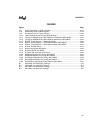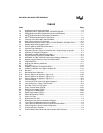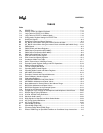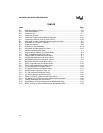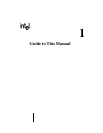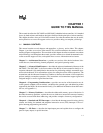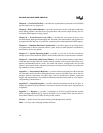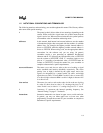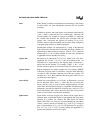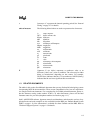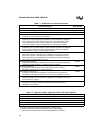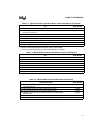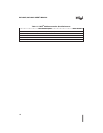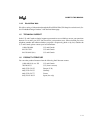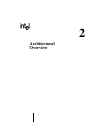
1-4
8XC196NP, 80C196NU USER’S MANUAL
italics Italics identify variables and introduce new terminology. The context
in which italics are used distinguishes between the two possible
meanings.
Variables in registers and signal names are commonly represented by
x and y, where x represents the first variable and y represents the
second variable. For example, in register Px_MODE.y, x represents
the variable that identifies the specific port associated with the
register, and y represents the register bit variable (7:0 or 15:0).
Variables must be replaced with the correct values when configuring
or programming registers or identifying signals.
numbers Hexadecimal numbers are represented by a string of hexadecimal
digits followed by the character H. Decimal and binary numbers are
represented by their customary notations. (That is, 255 is a decimal
number and 1111 1111 is a binary number. In some cases, the letter B
is appended to binary numbers for clarity.)
register bits Bit locations are indexed by 7:0 (or 15:0), where bit 0 is the least-
significant bit and bit 7 (or 15) is the most-significant bit. An
individual bit is represented by the register name, followed by a
period and the bit number. For example, WSR.7 is bit 7 of the
window selection register. In some discussions, bit names are used.
register names Register mnemonics are shown in upper case. For example, TIMER2
is the timer 2 register; timer 2 is the timer. A register name containing
a lowercase italic character represents more than one register. For
example, the x in Px_REG indicates that the register name refers to
any of the port data registers.
reserved bits Certain bits are described as reserved bits. In illustrations, reserved
bits are indicated with a dash (—). These bits are not used in this
device, but they may be used in future implementations. To help
ensure that a current software design is compatible with future imple-
mentations, reserved bits should be cleared (given a value of “0”) or
left in their default states, unless otherwise noted. Do not rely on the
values of reserved bits; consider them undefined.
signal names Signal names are shown in upper case. When several signals share a
common name, an individual signal is represented by the signal name
followed by a number. For example, the EPA signals are named
EPA0, EPA1, EPA2, etc. Port pins are represented by the port abbre-
viation, a period, and the pin number (e.g., P1.0, P1.1); a range of
pins is represented by Px.y:z (e.g., P1.4:0 represents five port pins:
P1.4, P1.3, P1.2, P1.1, P1.0). A pound symbol (#) appended to a
signal name identifies an active-low signal.



